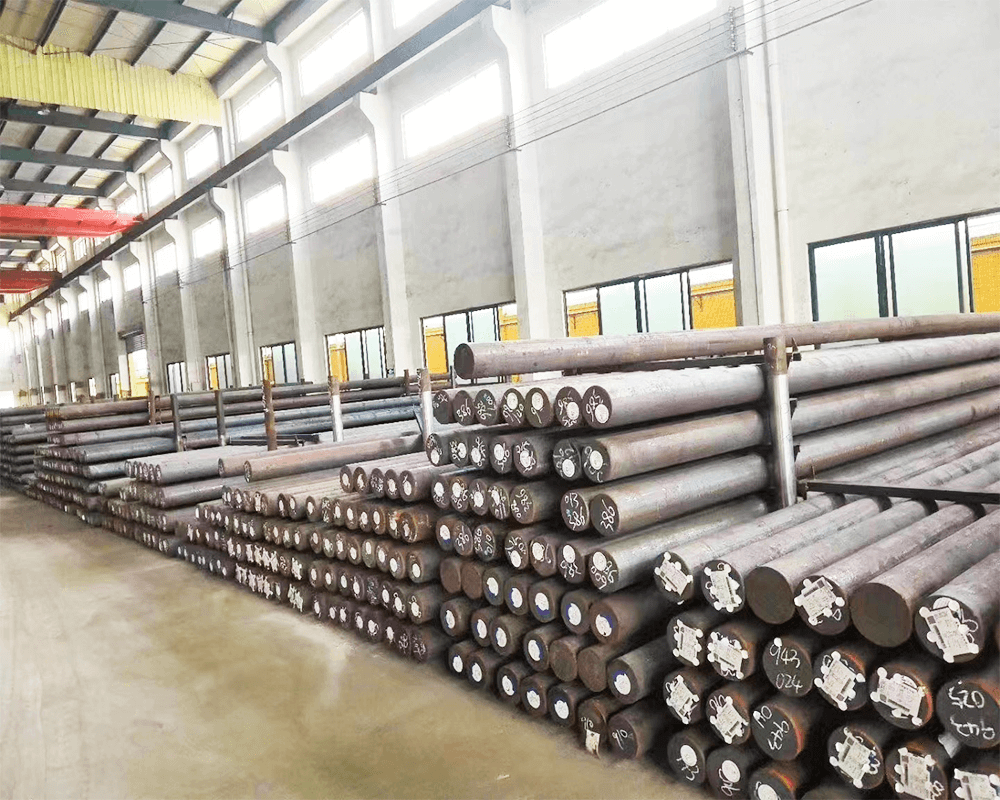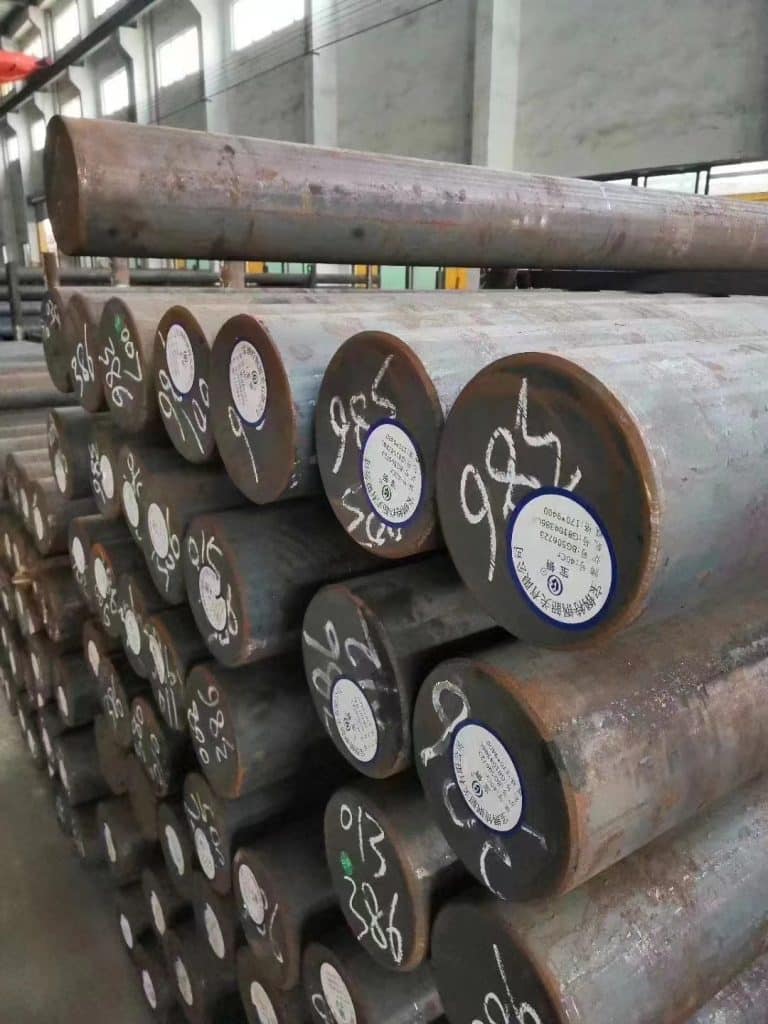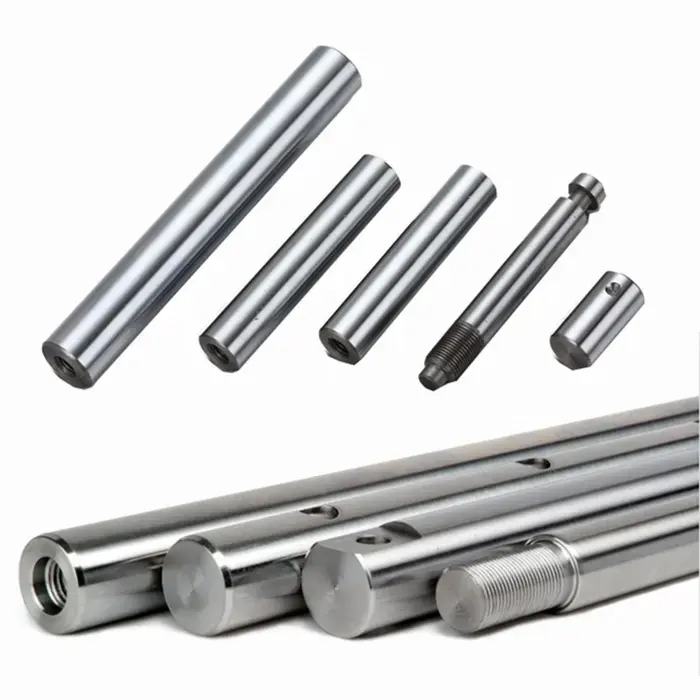In the realm of metallurgy and tool-making, material selection is pivotal to achieving a balance of durability, toughness, and cost-effectiveness. Chrome vanadium steel and alloy steel are two such materials that often come into consideration for their unique properties and applications.
What is Chrome Vanadium Steel?
Chrome vanadium steel is a specific type of alloy steel that is formulated by adding chromium (Cr) and vanadium (V) to carbon steel. This incorporation of these additional elements enhances the material’s mechanical properties and its ability to be heat treated for improved performance.
Chromium is known for its hardening effect, as well as its ability to resist oxidation and corrosion. Vanadium, on the other hand, contributes by increasing tensile strength, toughness, and wear resistance while also promoting fine grain structure within the steel.
These attributes make chrome vanadium steel an ideal choice for applications requiring high strength and durability without undue weight increases. Typical applications include hand tools such as wrenches, pliers, screwdrivers, and various automotive components where resilience against high stress or sudden impacts is paramount.
The addition of chromium and vanadium in controlled proportions allows this type of steel to achieve specific characteristics:
| Element | Primary Benefit |
|---|---|
| Chromium (Cr) | Enhances hardenability, corrosion resistance, and wear resistance |
| Vanadium (V) | Increases strength,toughness; refines grain structure |

Disadvantages of Chrome Vanadium Steel
| Characteristic | Detail |
|---|---|
| Susceptibility to Corrosion | Chrome vanadium steel is resistant to oxidation and corrosion due to chromium but can still rust if not maintained or in high moisture/corrosive environments. |
| Cost | The alloying process and materials make chrome vanadium steel more expensive than plain carbon steels, impacting cost-effectiveness in budget-constrained projects. |
| Weldability Issues | The alloying elements can complicate welding, requiring specific techniques and treatments to avoid cracking due to changes in mechanical properties at high temperatures. |
| Machinability Considerations | While machinable, it requires specific tools and conditions for optimal results. It is tougher than basic carbon steel, causing more wear on tools and machinery. |
| Brittleness at High Temperatures | Chrome vanadium steel is strong at high temperatures but can become brittle when exposed beyond a certain point, limiting its use in applications with significant thermal cycling. |
Advantages of Chrome Vanadium Steel
| Advantage | Explanation |
|---|---|
| Superior Strength | Offers high tensile strength, enabling tools to withstand strong forces and heavy use without breaking. |
| Enhanced Toughness | Provides excellent resistance to shock and impact, which prolongs the lifespan of tools. |
| Good Wear Resistance | High resistance to abrasion and wear extends the service life of the tools made from chrome vanadium steel. |
| Improved Hardness | Its ability to be hardened through heat treatment increases durability for heavy-duty tasks. |
| Corrosion Resistance | Contains chromium which adds an element of resistance against rust and corrosion. |
| Fatigue Resistance | Withstands repeated loading cycles without succumbing to fatigue prematurely. |
What is Alloy Steel?
Alloy steel is a type of steel that includes a variety of elements in total amounts between 1% and 50% by weight to enhance its mechanical properties. These alloys are divided into two groups: low-alloy steels and high-alloy steels, based on the proportion of alloying elements. Low-alloy steels are used to achieve better hardenability, which means they can be hardened throughout thick sections. High-alloy steels, such as stainless steel, have high corrosion resistance and can be particularly tailored for harsh environments.
The addition of specific alloying elements gives steel particular qualities. Common alloyants include manganese (Mn), nickel (Ni), chromium (Cr), molybdenum (Mo), vanadium (V), silicon (Si), and boron (B). Depending on the intended use of the alloy steel, these elements can improve qualities like strength, toughness, wear resistance, capability to withstand high temperatures, and resistance to corrosion.
Disadvantages of Alloy Steel
| Disadvantage | Explanation |
|---|---|
| Susceptibility to Corrosion | Some alloy steels are prone to rust when exposed to moisture or corrosive environments. |
| Cost | The addition of various alloying elements can make alloy steel more expensive than carbon steel. |
| Machinability | Certain alloy steels can be difficult to machine, requiring specialized tools and processes. |
| Weldability | Due to the complex chemical compositions, some alloy steels may pose challenges during welding. |
| Availability of Materials | Certain alloys contain elements that are rare or difficult to obtain, affecting availability. |
| Heat Treatment Sensitivity | Alloy steels often require precise heat treatment which can be complicated and costly. |
| Consistency in Properties | Variances in the mixture of elements can lead to inconsistencies in steel properties across batches. |
Advantages of Alloy Steel
| Advantage | Description |
|---|---|
| Mechanical Property Enhancement | Increased hardness & strength due to added elements |
| Corrosion Resistance | Elements like chromium improve resistance to rust |
| Customization & Versatility | Ability to tailor material properties through varied element mixes |
| Low-Temperature Performance | Sustained strength & ductility in extremely cold environments |
| Wear Resistance | Longevity in abrasive conditions |
| Cost-Effectiveness | Suitable for large-scale use without excessive expense |

Difference Between Chrome Vanadium Steel and Alloy Steel
To understand the differences between these two types of steel, it is important to consider the heat treating process and the specific alloying elements that define each material.
| Aspect | Chrome Vanadium Steel | Alloy Steel |
|---|---|---|
| Definition | A specific type of alloy steel containing chromium and vanadium. | A broad group of steels that include some combination of alloying elements beyond carbon. |
| Heat Treating | Known for its ability to be heat treated to achieve high strength and toughness which can improve wear resistance and fatigue strength. | Heat treatment varies greatly depending on the specific alloy composition, intended to enhance properties like hardness, strength, or corrosion resistance. |
| Alloying Elements | Specifically includes chromium (for increased hardenability and corrosion resistance) and vanadium (which enhances tensile strength and fatigue life). | Can contain a wide range of elements such as nickel, chromium, molybdenum, silicon, manganese or others in various combinations to achieve desired properties. |
| Key Properties | Good balance of strength and toughness with decent resistance to wear after proper heat treatment. Often used for tools or automotive components. | Variable based on composition; may optimize for specific properties like high temperature performance or resistance to oxidation or wear. |
Heat Treating
Heat treating is a critical process in the fabrication and performance of both Chrome Vanadium Steel and Alloy Steel, influencing their mechanical properties such as hardness, tensile strength, and ductility. The procedure involves heating the steel to a specific temperature, holding it at that temperature for a period of time, and then cooling it at a controlled rate. This thermal cycle can alter the microstructure of the steel, thereby changing its behavior under various conditions.
When heat treating Chrome Vanadium Steel, it’s typically exposed to temperatures ranging from 790°C to 830°C (1454°F to 1526°F) for austenitizing. Subsequent quenching (rapid cooling) is carried out in oil or air. Finally, tempering is done at lower temperatures—between 190°C and 370°C (374°F and 698°F)—depending on the desired level of hardness.
Alloy Steel also undergoes heat treatment but differs in technique based on its composition. For example, high-speed tool steels are often heated from 1200°C to 1300°C (2192°F to 2372°F), followed by quenching with forced air or inert gases such as nitrogen. Tempering temperatures usually are selected based on balancing hardness with toughness; higher tempering temperatures can decrease hardness while increasing toughness.
| Process Step | Chrome Vanadium Steel | Alloy Steel |
|---|---|---|
| Austenitizing Temp. | Typically around 790°C–830°C | Varies; Can reach up to 1300°C |
| Quenching Medium | Usually oil or air | Often forced air or inert gases |
| Tempering Temp. | Between approximately 190°C–370°C | Is adjusted according to specific alloy makeup |
Alloying Elements
The composition of an alloy steel is complex and defined by the various elements that are added to the base iron-carbon mixture to achieve specific properties. When discussing Chrome Vanadium Steel and general Alloy Steel, it is vital to consider the diverse array of alloying elements involved in their makeup. These elements play a critical role in determining the mechanical properties, such as tensile strength, toughness, hardness, and resistance to wear and corrosion.
Chrome (chromium) and vanadium are both used as alloying agents in steel to enhance its strength and durability. Chromium provides increased hardness and corrosion resistance, making the metal less susceptible to rusting. Vanadium contributes by refining the grain size of steel which increases toughness and allows for better heat treatment results.
Alloy steels may also incorporate a variety of other elements in different combinations:
| Element | Function |
|---|---|
| Manganese | Increases hardenability & impact strength; removes impurities |
| Nickel | Adds strength & toughness without sacrificing ductility |
| Molybdenum | Enhances creep resistance & elevated temperature strength |
| Tungsten | Increases wear resistance; promotes hardness at high temperatures |
| Silicon | Strengthens material; enhances magnetic properties |
| Cobalt | Stabilizes performance at high temperatures |

What Steel Should Hand Tools Be Made Out Of?
Selecting the appropriate type of steel for manufacturing hand tools is a critical decision that weighs heavily on various factors like durability, tensile strength, resistance to corrosion and wear, ease of manufacturing, and cost-effectiveness.
Tools are often subject to heavy use and require properties such as high tensile strength and toughness. The type of steel used should maintain its shape over time without significant bending or breaking. For instance, chrome vanadium steel is known for its excellent strength-to-weight ratio, making it an ideal candidate for high-impact tools such as wrenches and sockets.
On the other hand, though alloy steels also boast impressive strength characteristics and can be customized with a variety of alloying elements to meet specific needs, they may not always exhibit the balance necessary for some types of hand tools where flexibility and impact resistance are paramount.
Heat treatment plays a pivotal role in determining the final characteristics of the steel. Both chrome vanadium and various alloy steels can undergo different heat-treating processes to optimize their properties according to the intended tool application.
The table below summarizes key considerations in choosing suitable steel for hand tool production:
| Consideration | Chrome Vanadium Steel | Alloy Steel |
|---|---|---|
| Tensile Strength | High; ideal for impact-driven tools | High; depends on alloy composition |
| Toughness | Excellent; resists shock loads | Variable; tailored through alloy choice |
| Wear Resistance | Good; benefits from protective coatings | Good to excellent; alloy dependent |
| Corrosion Resistance | Moderate; better with added protection | Varies with alloy elements |
| Cost | Generally affordable | Varied; dependent on alloys used |
In conclusion
In conclusion, the distinct properties of Chrome Vanadium Steel and Alloy Steel suit them for varied applications across numerous industries. The choice between these two materials should be informed by their mechanical characteristics, environmental resistance, and the specific requirements of your project.
To explore your options further and select the steel that precisely aligns with your needs, we invite you to visit our comprehensive website or contact us directly. Our experts are equipped to provide personalized guidance backed by deep industry knowledge, ensuring you make a well-informed decision. Whether it is for construction, automotive components, machinery parts, or specialized equipment, let us help you find the ideal steel solution to enhance performance and durability in your applications. Connect with us today – forge ahead with confidence in every project venture.

